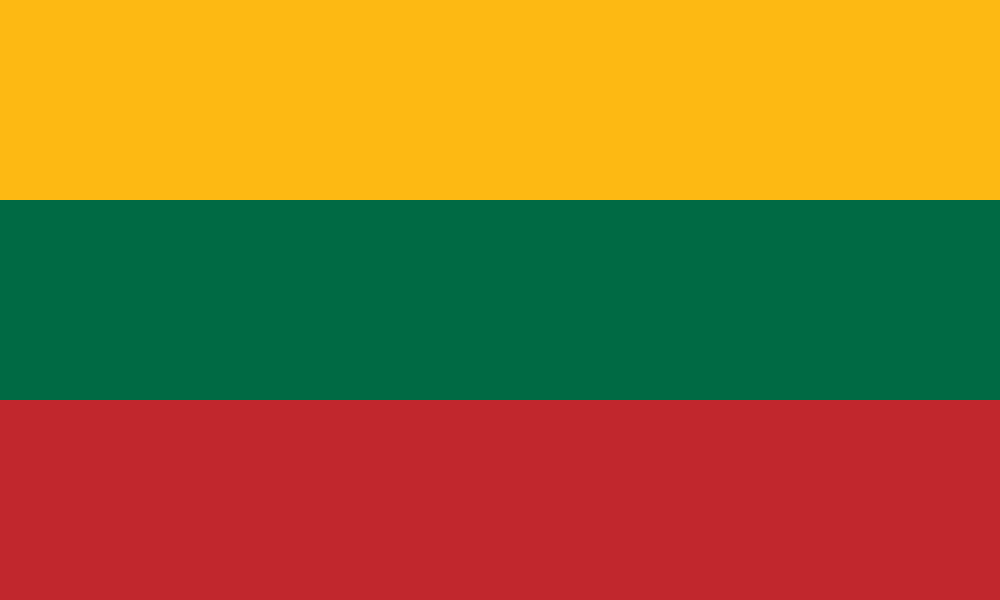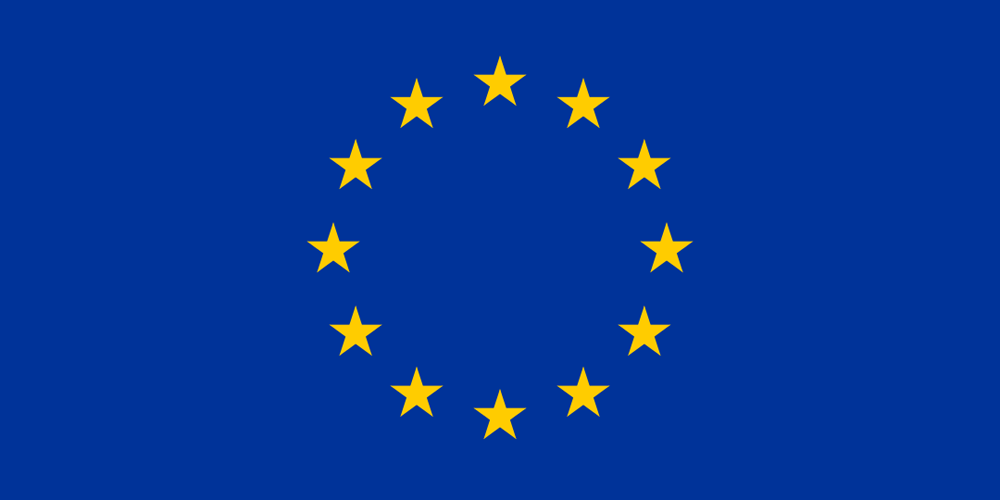Currency in Lithuania: EUR Send & Spend FX Guide
 Resources for Expats, Travelers and Entrepreneurs Navigating Life and Trade in Lithuania with the Euro.
Resources for Expats, Travelers and Entrepreneurs Navigating Life and Trade in Lithuania with the Euro.

What's in this Lithuania currency guide?
What currency is used in Lithuania?
The official currency of Lithuania (country code: LT) is the Euro, with symbol € and currency code EUR.
What is a good Euro exchange rate?
The BestExchangeRates.com currency comparison table below helps you see the total cost of your currency transaction by showing the exchange rates offered by different providers. It also makes it easy to spot potential savings from market-leading FX services compared to bank rates.
To see a full list of rates, enter your transaction type, currencies and amount then click ‘GET RATES’:
Loading rates...
|
|
|
Good things to know about the Euro
As of June 16, 2025, the Euro (EUR) has experienced notable developments affecting travelers, expats, and business owners:
- Interest Rate Adjustments: The European Central Bank (ECB) has reduced its key interest rates multiple times since April 2025, with the deposit rate now at 2%. This easing cycle aims to stimulate economic growth amid global uncertainties. (ft.com)
- Inflation Trends: Eurozone inflation has moderated, with the latest data showing a decrease to 2.4% in November 2024, bringing it closer to the ECB's 2% target. (nbcdfw.com)
- Eurozone Expansion: Bulgaria is on track to adopt the euro on January 1, 2026, following successful convergence assessments. This expansion may influence currency dynamics and economic interactions within the euro area. (en.wikipedia.org)
These developments are crucial for individuals and businesses engaged in international transactions, as they can impact exchange rates, purchasing power, and overall economic conditions.
For more EUR information check out our selection of Euro news and guides.
Frequently Asked Questions
What currency should I use in Lithuania?
The domestic currency in Lithuania is the Euro.
What is the Euro currency code and symbol?
The three letter currency code for the Euro is EUR — symbol is €.
What does the Euro look like?
Here is an example Euro banknote:

Which countries use the Euro?
It is the domestic currency in Eurozone, Aaland Islands, Andorra, Austria, Belgium, Bulgaria, Croatia, Cyprus, Estonia, Finland, France, French Guinea, French Southern Territories, Germany, Greece, Guadeloupe, Vatican City, Ireland, Italy, Latvia, Lithuania, Luxembourg, Malta, Martinique, Mayotte, Monaco, Montenegro, Netherlands, Portugal, Reunion, Saint Barthelemy, Saint Martin, Saint Pierre and Miquelon, San Marino, Slovakia, Slovenia and Spain.
Is the Euro a closed currency?
No, the Euro is freely available and convertible. See guide: What is a closed currency?
What are equivalent amounts of USD and EUR?
Here are some popular conversion amounts for USD to EUR (US dollar to Euro)*.
*Converted at the current USDEUR interbank exchange rate. Calculate actual payout amounts for Send Money and Travel Money exchange rates.

Travel money for Lithuania
Using Wise for Euro travel money is a smart choice for savvy travelers. With its competitive exchange rates and low fees, Wise allows you to convert and manage multiple currencies effortlessly.
Be careful when using your own bank's Debit/Credit Card, as your bank may also charge an extra 3% as an “Overseas Transaction Charge” plus “Overseas ATM” fees for withdrawing cash on top of the standard Visa/Mastercard 2.5% from market mid-rate.
For card purchases, if you are offered a choice of currencies always select to Pay in Euro otherwise you will typically get much worst dynamic currency conversion (DCC) exchange rates.
If you really want Euro cash before departure, you can save money by ordering online. You generally get better rates and can pick up the EUR cash locally or even on travel day at the airport.

Everyday Costs in in Lithuania
How much does it really cost to live, work, or travel in Lithuania? Here's what to expect for daily expenses and expat living.
Currency Guide for Lithuania (LT)
When planning a one-week mid-range stay in Lithuania, travelers should consider budgeting around €600 to €800, depending on individual preferences and activities. Here’s a breakdown of typical daily expenses in euros (€) to help you gauge your overall budget:
- 🍔 Meal at a local restaurant: €10-€15
- ☕ Coffee: €2-€3
- 🚍 Public transport fare: €1-€2
- 📱 Prepaid SIM card: €10-€15
- 🏨 Budget hotel or Airbnb: €30-€60 per night
Overall, Lithuania is relatively inexpensive compared to many Western countries, falling somewhere between cheap and average for visitors. For instance, a trip to Lithuania is generally more affordable than a trip to the United States, where meal prices and accommodations can easily be 30-50% higher. Similarly, travelers from the UK or Australia may find Lithuania to be a more budget-friendly option, with daily expenses often lower than those encountered in major cities like London or Sydney.
Expat Living Costs in Lithuania
For those considering a longer-term stay, expats should budget approximately €1,000 to €1,500 monthly to cover typical living costs, including rent, groceries, utilities, and leisure activities. Key expenses include rent for a one-bedroom apartment in the city center (around €400-€600) and grocery bills (~€200-€300).
When it comes to banking, it's advisable to set up a local bank account to avoid high fees associated with international transactions. Card usage is common in cities, but always carry some cash, as smaller establishments may not accept cards. For sending and receiving money, online transfer services like Wise or OFX often offer better exchange rates and lower fees compared to traditional banks. While converting cash locally is usually straightforward, using these services can provide additional savings, especially for larger amounts.
USD/EUR Market Data
The below interactive chart displays the USD/EUR change and UP📈 DOWN📉 trends over the past 1 Year.

Recent Euro Market News
December 27, 2025
Key Developments Affecting the Euro (EUR):
1. Bulgaria's Eurozone Accession: Bulgaria is set to adopt the euro on January 1, 2026, becoming the 21st member of the eurozone. This move is expected to enhance economic stability and integration within the region. (en.wikipedia.org)
2. ECB's Data-Dependent Policy Approach: The European Central Bank (ECB) continues to monitor economic data closely, maintaining a flexible stance on interest rates. This approach aims to balance inflation control with economic growth, influencing the euro's valuation. (currencysolutions.com)
3. Eurozone Economic Growth Projections: The eurozone's GDP is projected to grow by 1.6% in 2026, supported by fiscal measures in Germany and increased military spending across Europe. These factors contribute to a positive economic outlook for the euro. (economic-research.bnpparibas.com)
4. Global Trade Dynamics: Elevated trade policy uncertainty and higher tariffs, particularly from the U.S., are impacting global economic growth. These factors may influence the euro's performance against other currencies. (ecb.europa.eu)
These developments are expected to play a significant role in shaping the euro's exchange rate throughout 2026.
For more EUR information read our News and guides to the Euro.
Send Money to Lithuania - Best Rates
To get a good (and fair) exchange rate when sending money to Lithuania you need to find and compare exchange rates for International Money Transfers (IMTs).
The available FX rates for sending money abroad can be very different to the mid-market (wholesale) rate which you see reported online and in the News.
You should especially compare your own bank's exchange rates to those available from Money Transfer specialists to see how much you can save - we make that calculation easy in the below table.
Get a better deal for foreign transfers to Lithuania
When sending money to Lithuania it’s important to compare your bank’s rates & fees with those we have negotiated with our partner money transfer providers. To get a better deal you should follow these 4 simple steps :
- Open an account with a BER reviewed FX provider (id docs may be required)
- You specify the local or Euro amount you want to transfer
- Make a local currency domestic transfer for the requested amount to the provider's bank account in your country
- Once your funds are received by the provider the converted EUR amount will be transfered to the recipient account you specify in Lithuania.
Use the above calculator to compare the exchange rates of FX specialist providers rates versus your bank's standard rates you can hopefully save around 5% and maybe more - end result is more Euro deposited into the recipient bank account and less margins and fees kept by the banks!
